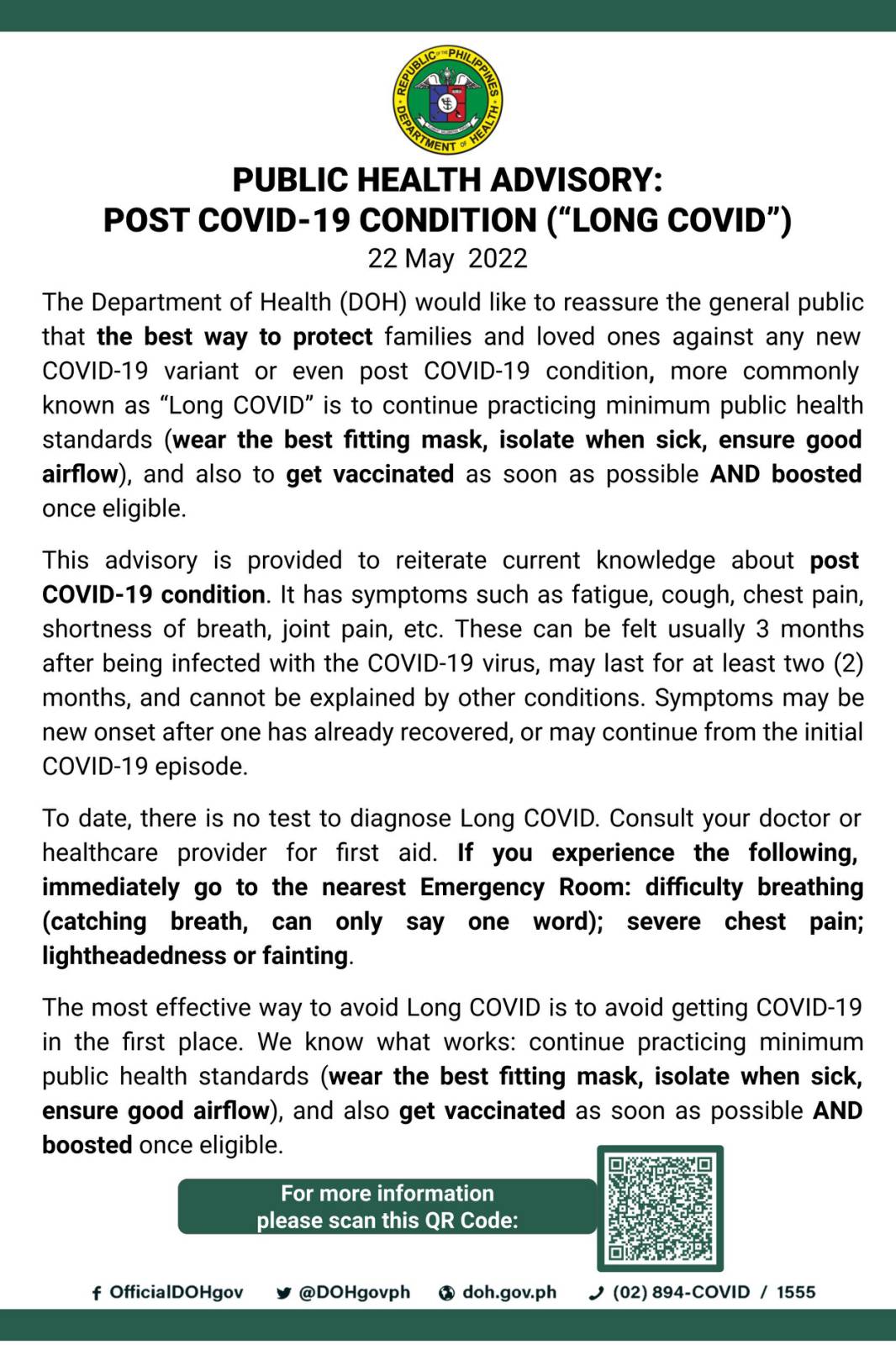The Department of Health released an advisory on Sunday, May 22 to reiterate to the public the need for practicing basic health standards, getting vaccine and booster shots to combat and manage post COVID-19 conditions also referred to as “long COVID.”

Long COVID, according to WHO, is when you re still experiencing some symptoms despite recovering from COVID-19. The DOH said that symptoms of long COVID include shortness of breath, fatigue, cough, chest pain, and joint pain, among others.
How long can ‘long COVID’ be experienced?
According to the health department, “these can be felt usually 3 months after being infected with the COVID-19 virus, may last for at least 2 months, and cannot be explained by other conditions.”
They added that the “symptoms may be new onset after one has already recovered, or may continue from the initial COVID-19 episode.”
As it stands, there is still no test to diagnose Long COVID.
Because of this, the public is advised to consult a doctor or healthcare provider for first aid.
Emergency assistance is required should the COVID-19 patient experience the following:
- Difficulty breathing (catching breath, only being able to say one word)
- Severe chest pain
- Lightheadedness
- Fainting.
“The most effective way to avoid Long COVID is to avoid getting COVID-19 in the first place,” said DOH.
The department has reported on Saturday that the Philippines has the highest number of new coronavirus infections for the month of May with 246 new cases.
They are yet to determine whether this has anything to do with their recent advisory on the first case of Omicron variant detected in the country.
As of today, Philippines total cases has risen to a total of 3,688,751.




